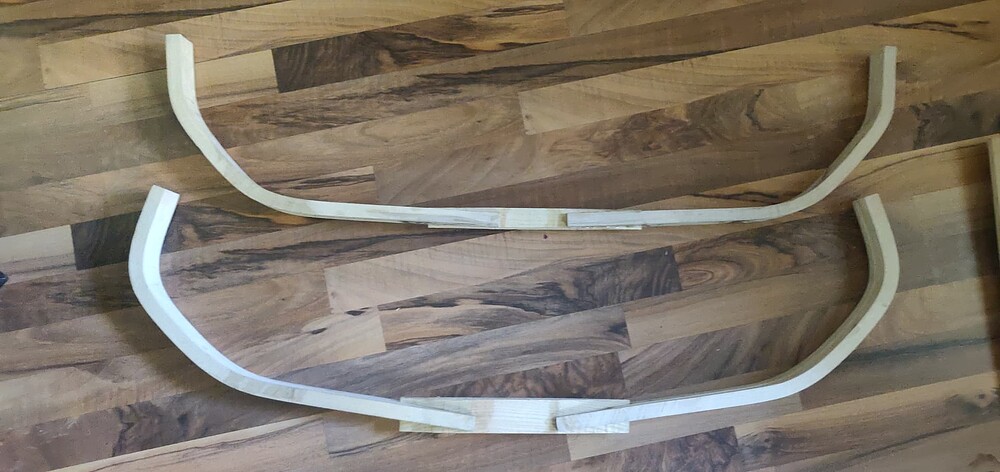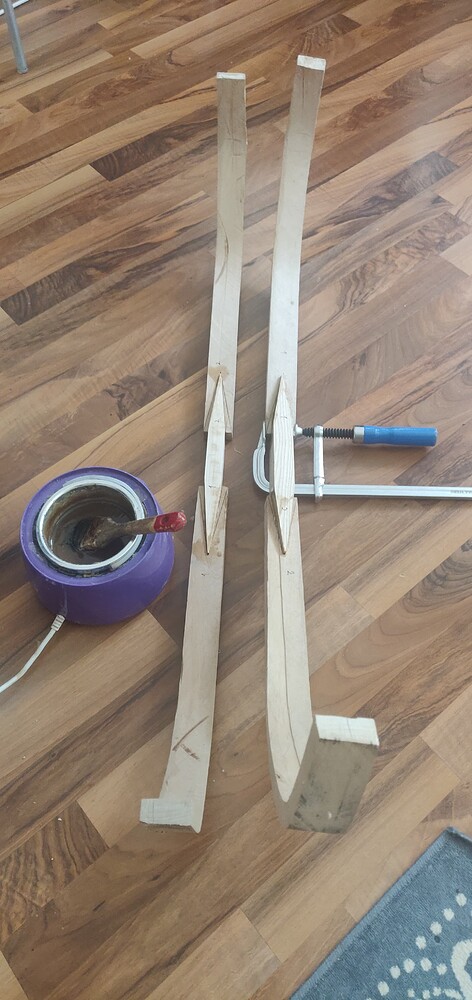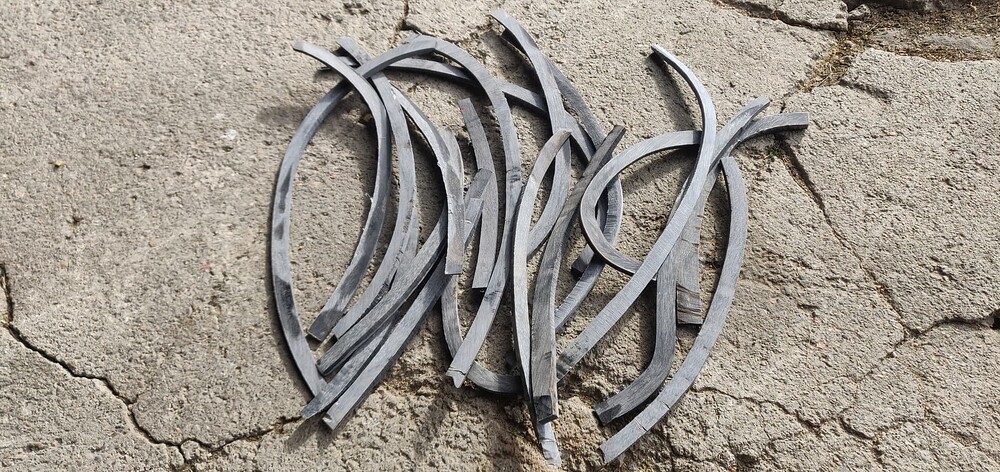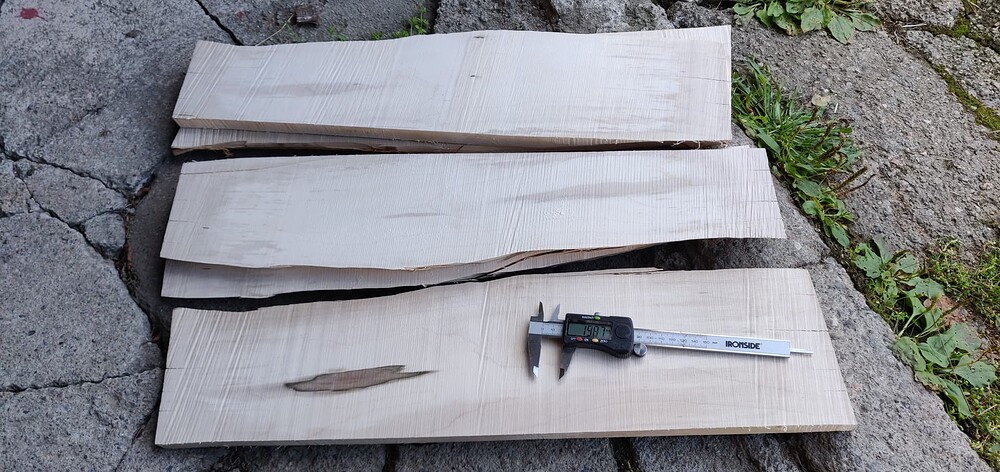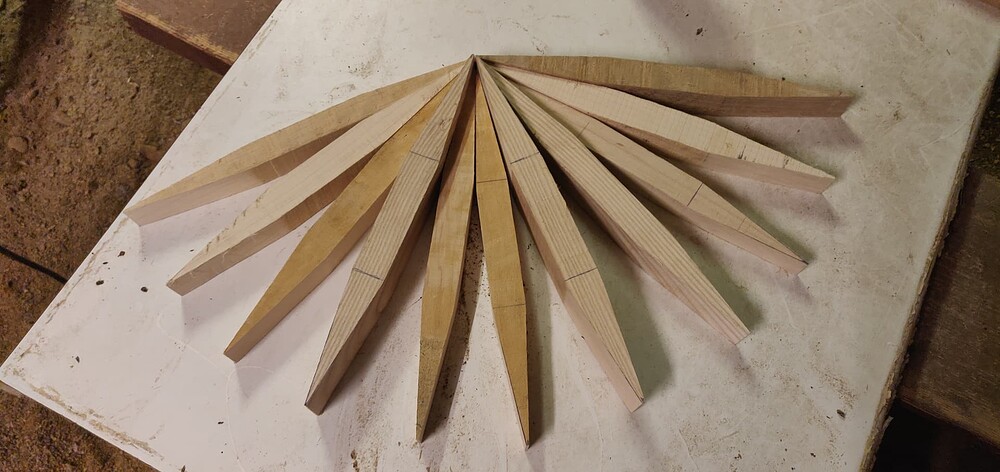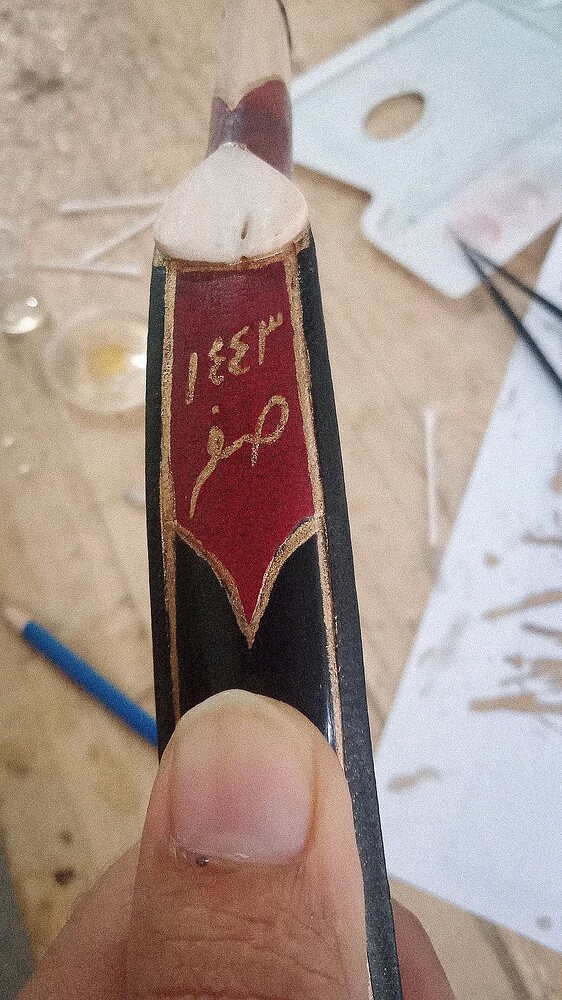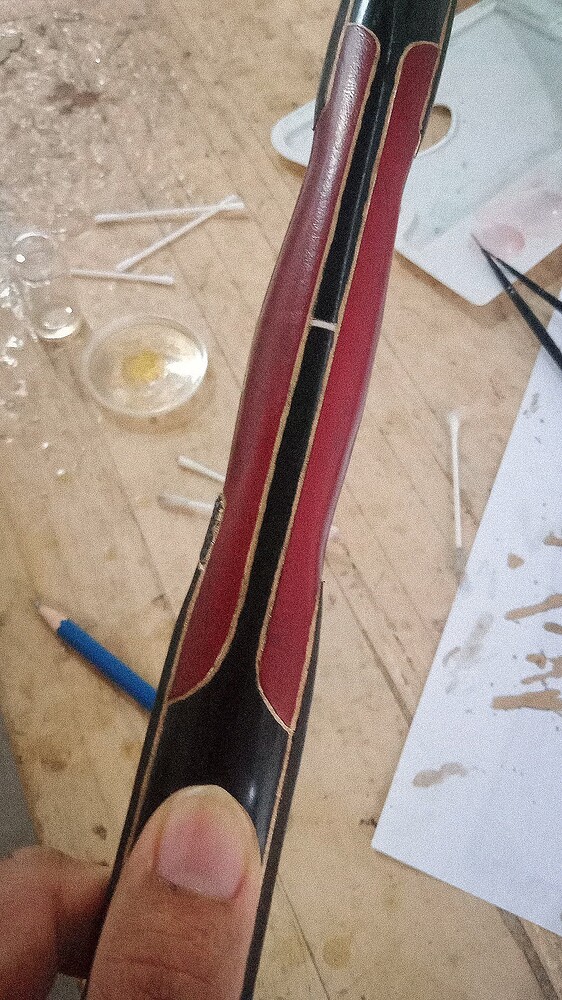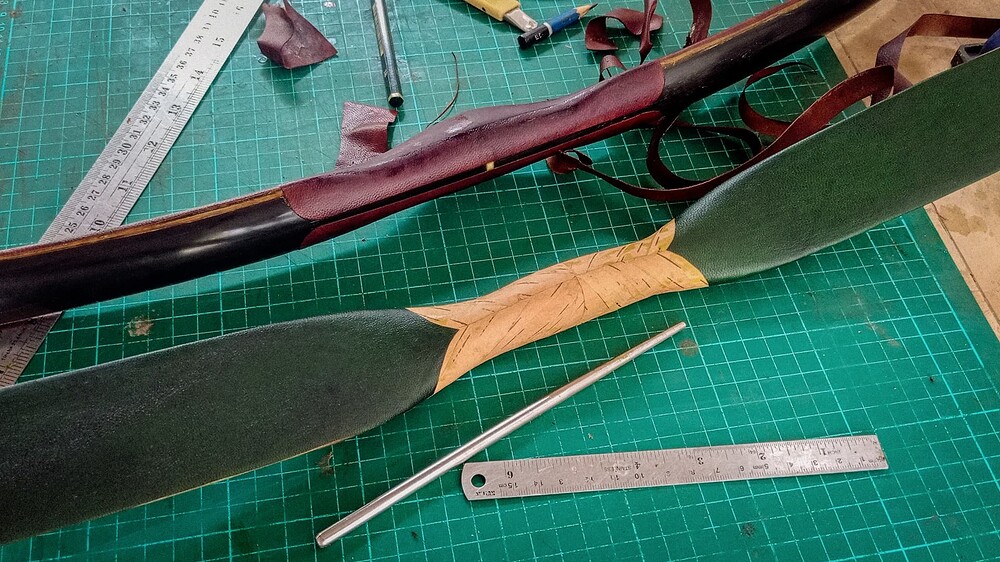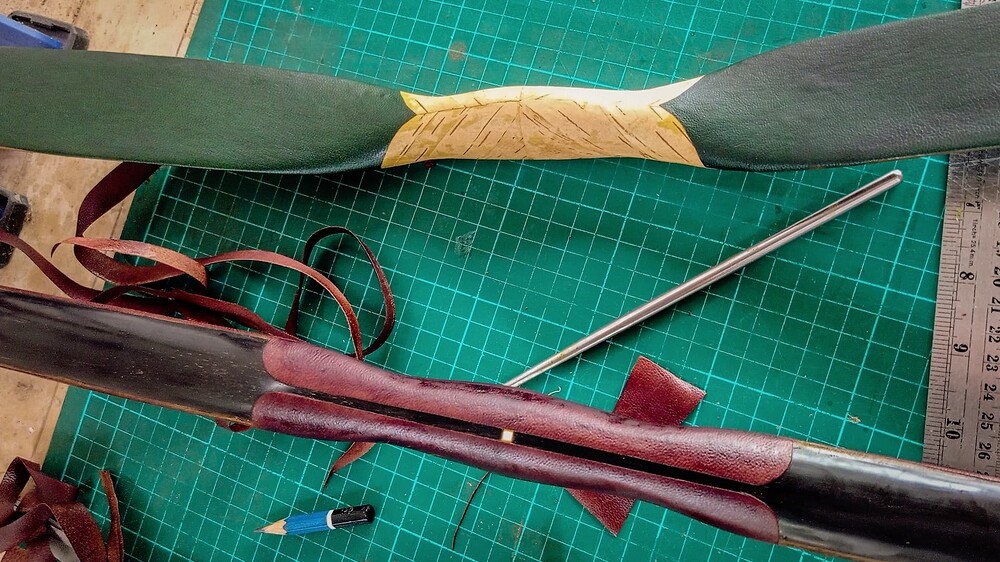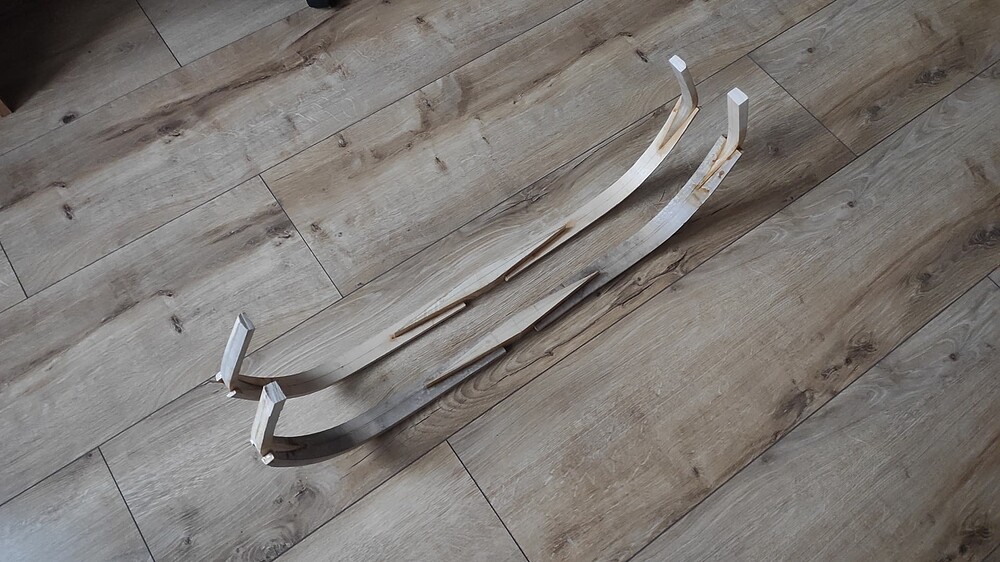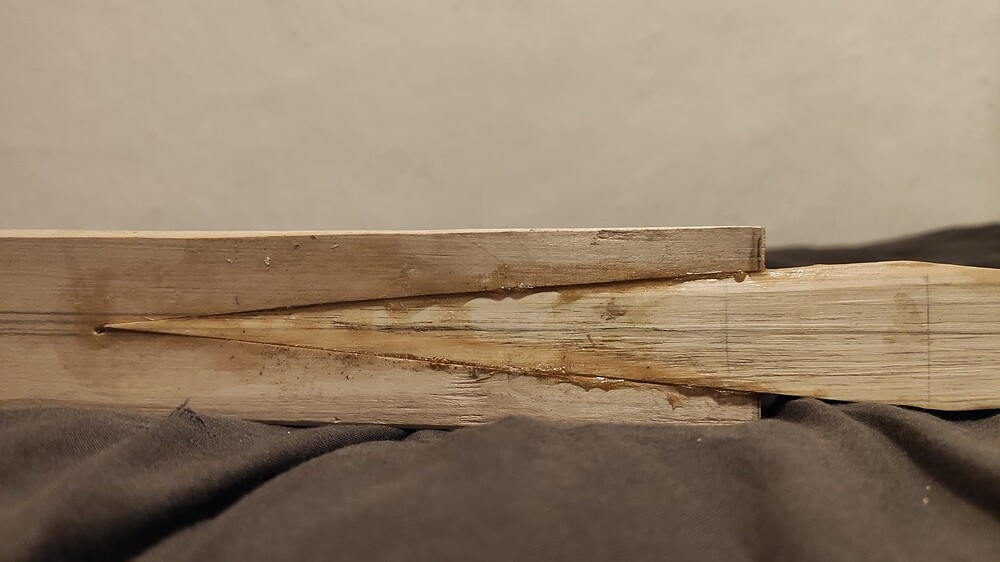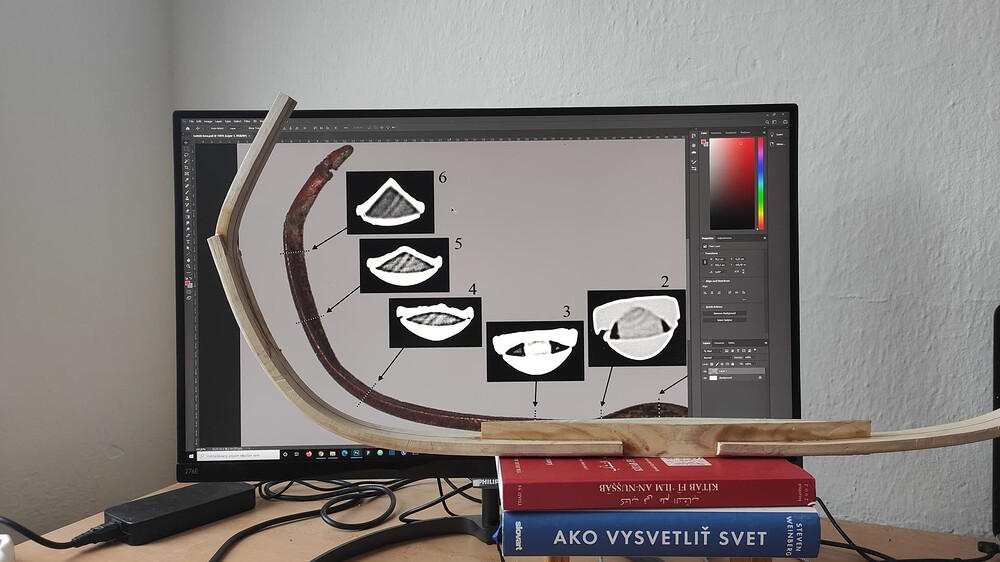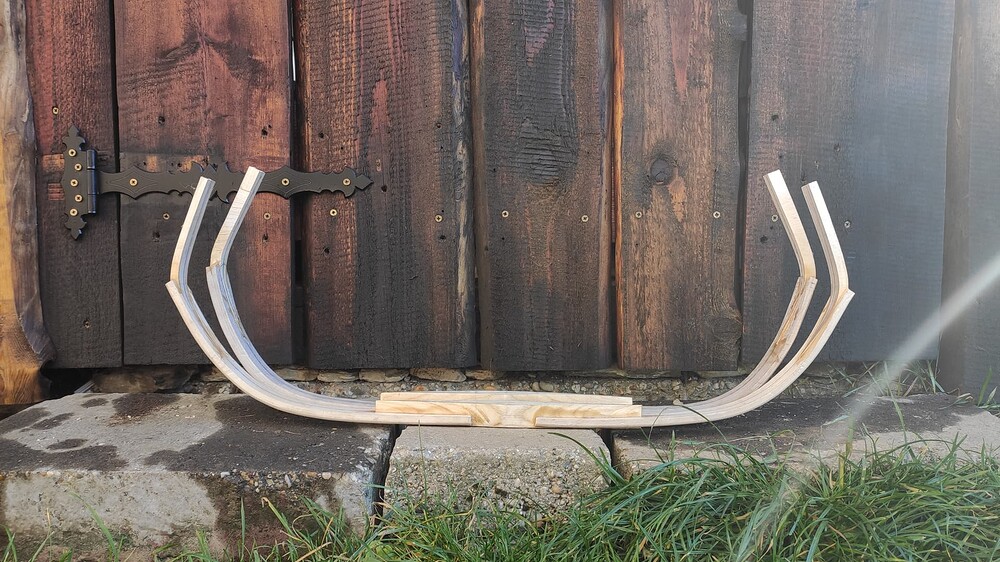A topic where everyone can share what archery related did you recently do?
Shooting, arrowmaking, bowmaking, target building etc. all welcome!
This weekend i spent sawing a lot of wood for multiple projects. Not lying, the bandsaw was on for 6h straight. A scythian is soon a realistic goal.
Then i glued a long turkish and medium crimean tatar cores.
Glued two turkish core. My second and third, same form as the first succesful turkish bow. Nevertheless, I need a new form. My primary objective is now flight bows.
Very nice work Rashid. What kind of paints are you using?
thank you Ken… it’s enamel/alkyd based for the tehzip/gilding, and water-based dye for the leather…
Nice! Elegant mosaic pattern in the bark.
Where do you buy your leather? I assume its thinned by the supplier?
I thinned the goat leather my self… but it’s already quite thin from the supplier, about 0.3-4mm or so
Made my first cores today. Didn’t expect that V joints are that hard to make, I was quite sad from 1mm gaps. Then I saw original joints  There are for 60 and 80 pound bows
There are for 60 and 80 pound bows
Great start! Splicing the tips is easier than setting up a bending system where you can bend thick tips evenly. Fresh cut wood would be easy, but its not so easily available.
How long are those bows? The kasan eye looks really balanced for your first try.
I think 44-45 inches. I’m trying to copy this bow, but got a little springback. And tips are really thin - 13mm so I need to glue at least 5mm of wood to them.
I see. Take into account that these old warbows have developed a lot of reflex in the kasan eye over the years. Its because the warbows had flexible kasan eyes with lot of sinew and horn.
Therefore, if you now copy the shape 1:1, you will end up with a bow that has a lot more acute kasan angle than the old bow. In my opinion.
From this view it is quite significant bend in the kasan eye. If it was less it would be easier to balance when you are a first-timer. Are you?
What i like about the original bows, they many times have even the tip parts a little bit reflexed. It would be one small detail to copy into our replicas. I have some bows made like this but sometimes i forget…
Yes I am first timer, and I notice reflexed tips in the originals as well. I can straighten it a bit with the heat, if you recommend it. I really have struggle with making these lower draw weights, I want 100+ . But I understand that is not realistic in the beginning.
Just to make sure, i meant the nock/tip part that is curved. Below nock groove.
If you want a 100# bow, its not really a problem. I don’t think its extra hard if you can glue the horn properly, leave enough width (finished bow 33-35mm wide) and you can get it balanced well, meaning the kasan eye isn’t so reflexed.
Also tools are important. If you have a good pegboard, you can control the tillering process easily and end up with well tillered heavy # bow.
But yeah, accidents happen and stresses in 50# bows are a lot less than they are in 100# bows. Important is also to have the bending distributed over longer area when core is shaped.
I failed in many bows when i tried to make heavy bows and i didn’t have room to tiller them properly.
Yes! Super. You wont regret.  I recommend to do the same for the other core. But try to keep track how much you open them so you can adjust the both limbs equally.
I recommend to do the same for the other core. But try to keep track how much you open them so you can adjust the both limbs equally.
I actually have one similar case at hand right now, a mongol bow that i reflexed too much. I was thinking of measuring the distance of the tips from each other, then opening 1st kasan, measuring again and then opening the 2nd kasan to make them exactly the same.
Ok, thank you for your help.
